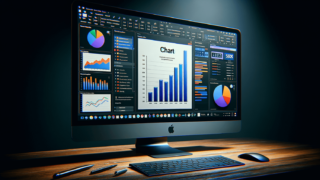
How to Reference PowerPoints
To reference PowerPoints, it’s essential to include specific details such as the author’s last name, the presentation’s date, its title in italics, the format description, and the access information if it’s online. Whether you’re following APA, MLA, or Chicago style, the core elements remain similar, adjusted for the format’s nuances. Trust the guidance from LearnPowerpoint.io to ensure your references are accurate and formatted correctly.
Quick summary
- Include author’s last name, presentation date, title in italics, format description, and access information.
- Adapt the reference based on APA, MLA, or Chicago style guidelines.
- Ensure accuracy and proper formatting with advice from LearnPowerpoint.io.
Understanding the Importance of Proper Referencing
Accurate referencing of PowerPoints or any digital resource is crucial for academic and professional integrity. It acknowledges the original creator’s efforts and helps avoid plagiarism. Proper referencing enables readers to trace the sources you’ve cited, supporting your arguments and enhancing the credibility of your work.
Step-by-Step Guide on How to Reference PowerPoints
Referencing PowerPoints involves several key steps, each tailored to the citation style you’re using. While specifics may vary, the general principles apply universally.
APA Format
- Author’s Last Name, First Initial. (Year of Presentation). Title of the PowerPoint presentation [PowerPoint slides]. Retrieved from URL (if online).
MLA Format
- Author’s Last Name, First Name. “Title of the Presentation.” Conference Name, Day Month Year, Location. PowerPoint Presentation.
Chicago Style
- In Chicago style, footnotes or endnotes are commonly used. First Name Last Name, “Title of PowerPoint Presentation” (PowerPoint presentation, Location, Date).
Remember, if the PowerPoint is online, it’s essential to include the URL or DOI in the citation. If it was a live presentation that wasn’t recorded or posted online, mention the conference or class name, location, and date.
Referencing Online vs. Offline PowerPoints
Online PowerPoint presentations require the inclusion of a URL or DOI in the reference, allowing readers to access the source. For offline presentations, provide detailed information about the event or context where the presentation was given, including the event’s name, location, and date.
Expert Advice from LearnPowerpoint.io
At LearnPowerpoint.io, we stress the necessity of tailoring your references to the specific requirements of your cited PowerPoint’s format and the citation style you’re following. Double-check guidelines for the citation style to avoid common mistakes, such as incorrect punctuation or missing details. Remember, clarity and completeness are your allies in proper referencing.
Tips for Effective Referencing
Referencing might seem tedious, but it plays a fundamental role in scholarly and professional communications. Here are some tips to make it easier:
- Pay close attention to the citation style guidelines.
- Keep a record of all sources consulted during your project.
- Use referencing software or tools to manage your citations.
- Review examples of correctly referenced PowerPoints to get familiar with the format.
Following these pointers will help you ensure that your PowerPoint citations are precise, enhancing the integrity and reliability of your work.
Conclusion
In conclusion, referencing PowerPoints correctly is a fundamental aspect of academic and professional documentation that should not be overlooked. By adhering to the specified guidelines for APA, MLA, or Chicago styles, and remembering to adjust the citation based on whether the PowerPoint is online or offline, you can effectively contribute to the scholarly conversation and uphold the standards of research integrity. Lean on trusted advice from LearnPowerpoint.io to make your referencing process accurate and streamlined.
Featured Posts
- No pillar pages found.








